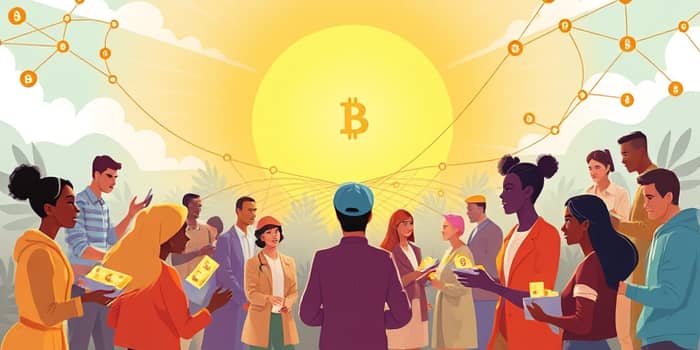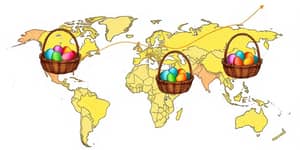Imagine a world where individuals can become their own bankers, where entrepreneurs secure capital in moments, and where communities rally to support each other’s dreams. That world is not fiction—it’s the reality of a transformative force in finance known as peer-to-peer (P2P) lending. Today, this fintech revolution is redefining how money moves, offering unprecedented opportunities for investors and borrowers alike.
As traditional banks grapple with legacy systems and stringent regulations, P2P platforms thrive on speed, transparency, and innovation. Whether you’re an individual seeking higher yields or a small business in need of funding, understanding this new landscape can unlock powerful advantages. This article delves into market growth, operational mechanics, technological breakthroughs, risk considerations, and the bright future ahead.
The Rise of Peer-to-Peer Lending
Global P2P lending platforms have surged from niche beginnings to a marketplace valued at USD 176.5 billion in 2025. Forecasts suggest explosive growth—up to USD 1,380.8 billion by 2034 at a CAGR of 25.7%. In the United States alone, the sector jumped to USD 52.7 billion in 2024 and eyeing USD 164.6 billion by 2033, fueled by an 11.1% five-year revenue CAGR.
Such numbers reflect more than just statistics; they signal a paradigm shift. Borrowers benefit from quicker approvals and lower rates, while investors enjoy risk-adjusted returns for investors averaging 6.5% in 2023—far outpacing traditional savings accounts. As pandemic lockdowns fast-tracked digital adoption, the P2P market capitalized on society’s hunger for seamless, online financial services.
How Peer-to-Peer Platforms Operate
At its core, P2P lending eliminates bank intermediaries, facilitating direct borrowing and lending between individuals. Platforms match creditworthy borrowers with investors seeking portfolio diversification. Behind the scenes, sophisticated algorithms assess credit profiles, set interest rates, and automate transactions.
- Personal Loans: Unsecured, most prevalent, used for debt consolidation or medical expenses.
- Business Loans: Funding for SMEs, fueling expansion and operations.
- Real Estate Loans: Secured by property, lower risk, longer terms.
- Student/Education Loans: Financing tuition with flexible repayment.
Emerging niches like cryptocurrency-backed loans and green financing are pushing boundaries further, while institutional P2P models welcome banks and hedge funds to the lending arena.
Driving Forces Behind the Market
Several dynamics propel P2P lending’s meteoric rise:
- Demand for Alternative Financing: Individuals and SMEs bypass lengthy bank processes and stringent credit criteria.
- Technological Innovation: Platforms employ artificial intelligence and machine learning for precise credit scoring and automated underwriting.
- Digital Convenience: Mobile apps and online portals make borrowing and investing seamless, 24/7.
About 60% of leading platforms leverage AI-powered credit systems, cutting default rates by 15%. The result? Faster decisions, better risk management, and expanding trust in the P2P ecosystem.
Balancing Risks and Returns
Investors are drawn by the prospect of higher, risk-adjusted investment returns, but caution is essential. Global default rates averaged 4.5% in 2023, with consumer loans at 3.2% and small business loans peaking at 5.8%. High-risk categories, like crypto-backed borrowing, saw defaults near 7%. Collateralized loans, representing 20% of certain segments, offer a buffer, while recovery processes recoup about 55% of defaulted funds.
Managing risk means diversifying across platforms, loan grades, and geographies. Regular portfolio reviews and reinvestment of returns can amplify growth while mitigating concentration risks.
Regulation, Technology, and Innovation
Regulatory frameworks vary globally, but trends point toward navigating regulatory frameworks with confidence. In mature markets, clear guidelines protect consumers and investors, while emerging economies balance innovation with oversight. Bank partnerships have become common, offering insured funding channels and enhanced liquidity.
On the technological frontier, voice AI for customer engagement, blockchain for transaction transparency, and advanced fraud detection tools are reshaping P2P landscapes. Platforms that integrate these tools gain a competitive edge, improving borrower experiences and investor confidence.
Seizing Opportunities and Looking Ahead
For borrowers, P2P lending means easier access to credit and personalized loan solutions. Small businesses can secure capital within days rather than weeks, fueling growth and innovation. Investors, meanwhile, benefit from diversification beyond stocks and bonds, tapping into an asset class that thrives on digital disruption.
- Conduct thorough due diligence on platform models and default histories.
- Diversify investments across loan grades and geographic regions.
- Stay updated on regulatory changes in target markets.
- Reinvest returns to harness the power of compounding.
Regional adoption remains strongest in Asia-Pacific and North America, driven by high internet penetration and fintech-friendly policies. As institutional capital flows in, expect enhanced liquidity and more competitive interest rates.
Looking to the horizon, P2P lending stands at the intersection of finance and technology. Platforms that marry robust compliance with cutting-edge AI will lead, offering safer, smarter investment avenues. Borrowers will enjoy increasingly tailored loan products, while grassroots investors can secure returns that were once reserved for financial institutions.
Peer-to-peer lending is not just another fintech trend; it represents a seismic shift in how we think about money, trust, and community. By understanding its mechanics, weighing its risks, and embracing its innovations, you can harness this new era of investment to build a more inclusive and prosperous financial future.
References
- https://www.precedenceresearch.com/peer-to-peer-lending-market
- https://datahorizzonresearch.com/peer-to-peer-p2p-lending-market-57300
- https://www.coherentmarketinsights.com/market-insight/peer-to-peer-lending-market-3677
- https://www.globalbankingandfinance.com/-peer-to-peer-lending-trends-2025
- https://coinlaw.io/peer-to-peer-lending-statistics/
- https://www.imarcgroup.com/united-states-peer-to-peer-lending-platforms-market
- https://www.ibisworld.com/united-states/industry/peer-to-peer-lending-platforms/4736/
- https://www.ibisworld.com/united-states/market-size/peer-to-lending-platforms/4736/










